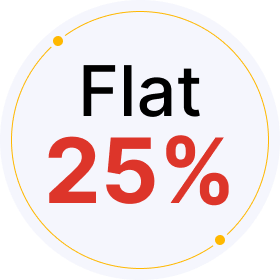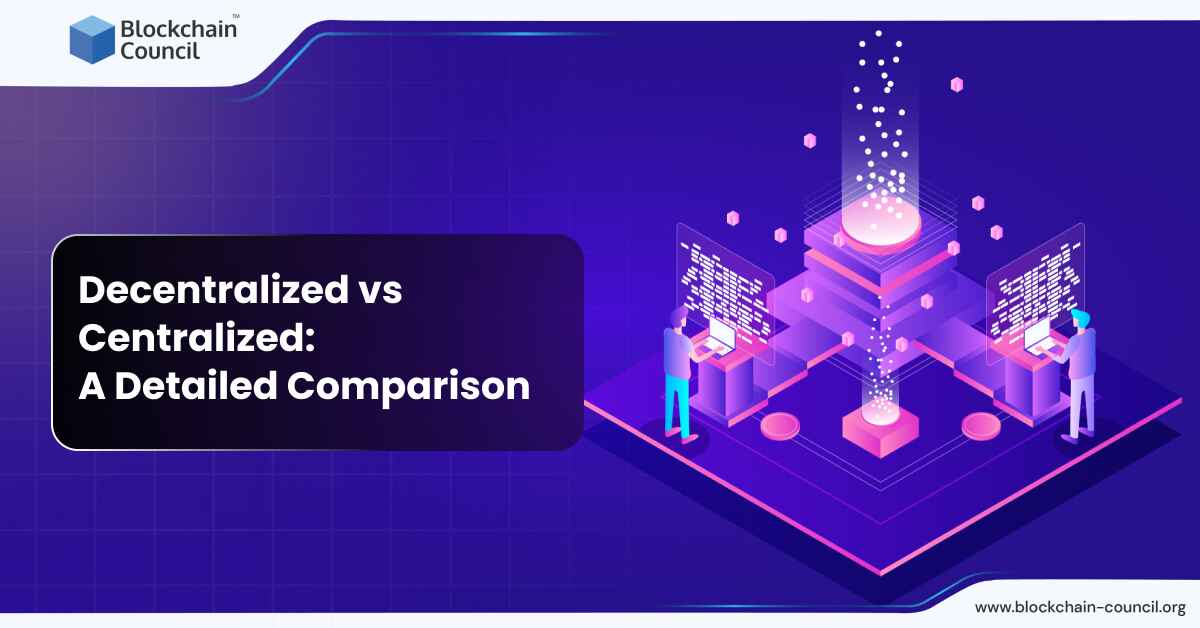
- Ayushi Abrol
- August 27, 2024
Centralization and Decentralization
In the context of Blockchain, Centralization refers to a system where control and decision-making authority are concentrated in the hands of a single entity or a small group of entities. This can lead to vulnerabilities, as the system relies on the trustworthiness and security of these few controllers. In contrast, Decentralization distributes control and authority across a network of independent participants (nodes), each maintaining a copy of the blockchain and participating in consensus mechanisms to validate transactions. This structure enhances security and trust, as no single entity has overarching control, reducing the risk of manipulation or single points of failure. Decentralized systems are fundamental to the principles of blockchain, promoting transparency, immutability, and resilience.
Decentralization (Definition and Explanation)
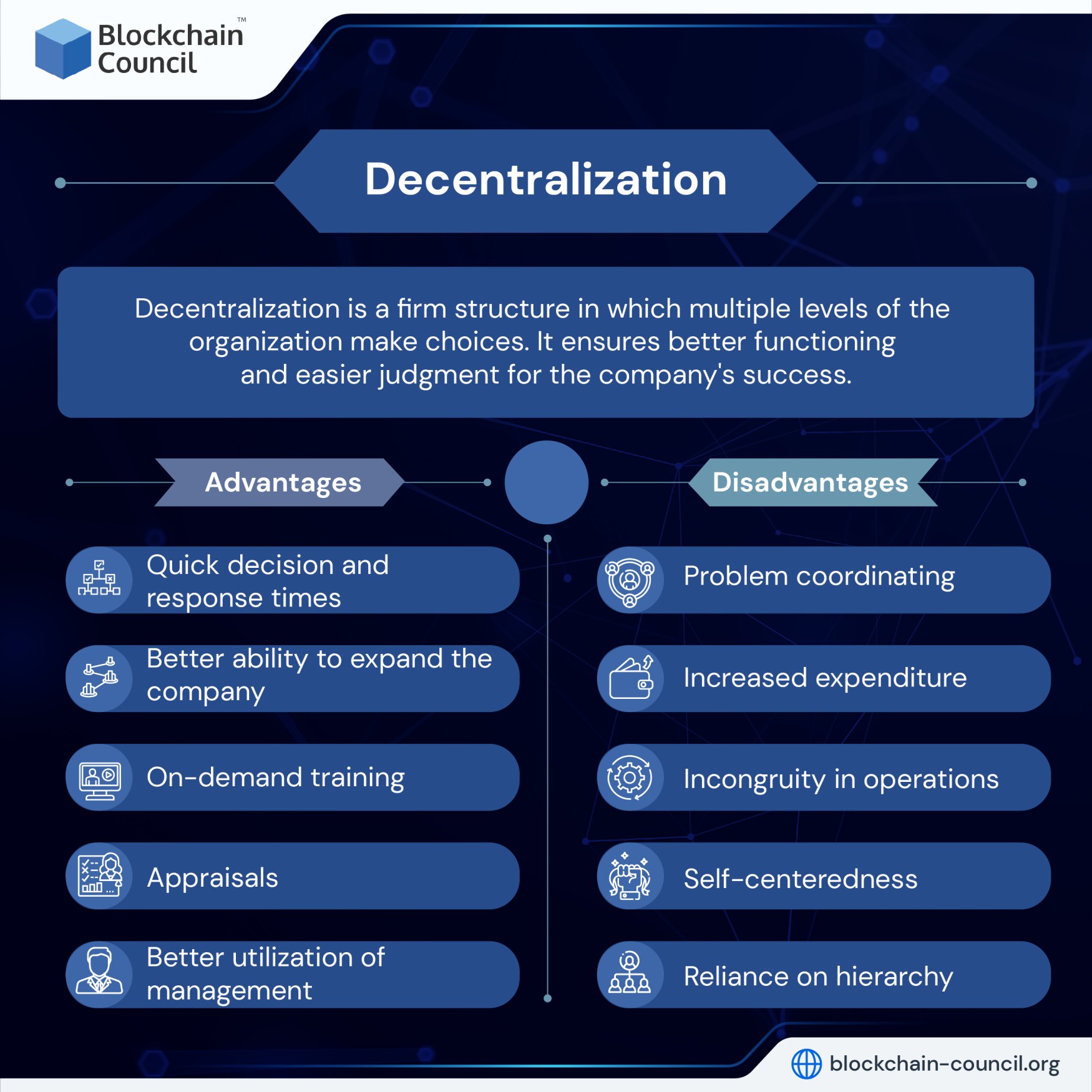
Meaning of Decentralization
Decentralization is a firm structure in which multiple levels of the organization make choices. To make measuring the company’s success and the staff inside each sub-groups easier, decentralized firms are generally divided into smaller segments or groups.
Many businesses operate in extremely competitive markets and industries. Therefore, a firm must work hard to build strategic competitive advantages that set it apart from its competitors to be successful.
To achieve this, the system must allow the firm to quickly change and capitalize on possibilities. This is why many organizations adopt a decentralized concept to maintain a competitive advantage.
Characteristics and Features of Decentralization
Decentralized Control: Unlike centralized networks, decentralized networks operate via a network of nodes. Each node in such a system operates with equal authority. This eliminates single points of control. Therefore a decentralized concept is more secure and resistant to censorship.
Transparency and Immutability: Decentralized concepts often use Blockchain technology. In such a decentralized network, all transactions are recorded in an open, public ledger. This results in transparency and immutability. A transaction cannot be altered once it is recorded on the Blockchain.
Community Governance: Decentralization allows for community-driven governance. In a decentralized concept, network participants can vote on decisions that affect the system. This empowers users and ensures that the network remains democratic and community-focused.
Advantages and Benefits of Decentralization
Quick decision and response times
Decisions must be taken and implemented as soon as possible. In addition, firms must capitalize on opportunities that align with their overall strategy to remain competitive.
Better ability to expand the company
It is critical for firms to always look for new ways to supply goods and services to their customers.
On-demand training
Organizations must train highly skilled people who can make informed judgments that help the organization achieve its goals.
Appraisals
A pay raise frequently accompanies promotional possibilities. Moreover, in a decentralized business, a pay raise is frequently accompanied by additional duties such as learning new skills, having more decision-making authority, and supervising other employees.
Better utilization of management
A company needs to accomplish several tasks to succeed. Lower and middle management frequently performs many of these activities in decentralized businesses. Managers can develop essential experience and competence in various areas due to this.
Examples of Decentralization
Ethereum: Ethereum is a decentralized platform. It enables the creation of decentralized applications (dApps). One popular use of Ethereum is in decentralized marketplaces. In these marketplaces, users can buy and sell goods and services without the need for intermediaries. The decentralized nature of Ethereum makes these marketplaces more secure and resistant to censorship. This way, it allows for a more open and equitable trading environment.
Civic: Civic is a decentralized platform for secure identity verification and management. This platform allows users to control their personal information and share it with trusted parties without the need for intermediaries. Civic achieves this by leveraging Blockchain technology. This decentralized approach to identity management offers greater privacy and security compared to traditional centralized organizations.
IPFS: IPFS (InterPlanetary File System) is a decentralized concept for storing as well as accessing files and data. With the help of a distributed network of nodes, IPFS offers a more secure and censorship-resistant way to store and access information.
Centralization
Definition and Explanation of Centralization
Centralization refers to a central location or managerial personnel responsible for planning, decision-making, and action-taking activities. This organization’s significant rights and powers lie in senior management’s hands.
In the past, using the centralization approach was common to keep all of its powers in one place. As a result, higher-ups completely controlled middle and lower-level management’s actions. Apart from that, personal leadership and coordination are evident, as is the ease of dispersed work among staff.
Characteristics and Features Centralization
Single Authority: The most defining feature of centralization is that it operates under a single authority. This authority makes all the major decisions and delegates tasks to its subordinates. This hierarchy is easy to follow. All employees know who to report to and who to expect instructions from.
Streamlined Decision-Making: In a centralized concept, decision-making is streamlined. This happens since decision-making in such a network is done from a single point. This reduces the time it takes to make decisions and increases efficiency, as there is less room for confusion or misinterpretation.
Enhanced Control: Centralization allows organizations to have enhanced control over their operations. Since decisions are made at the top, management can easily monitor the progress of tasks and make changes as needed. This leads to better coordination and execution of plans.
Also Read- Web3.Js Vs Ethers.Js
Advantages and Benefits of Centralization
An efficient communication chain
A transparent communication chain assists a centralized organization since everyone knows who to report to. When junior employees have problems with the company, they know who to contact. On the other hand, senior executives have a well-defined framework for distributing responsibility to staff who excel in specialized activities. A transparent chain of command is advantageous when a company wants to make decisions swiftly and uniformly.
Clear vision
An organization with a centralized management structure may easily focus on achieving its vision. There are open communication channels, and the senior executive may express the organization’s objective to employees while guiding them toward achieving it.
The top-down direction of an organization’s vision provides a straightforward implementation of its visions and plans. As a result, customers, suppliers, and communities receive a consistent message from the organization.
Economic
A centralized company follows standard operating processes and methods, which helps cut down on office and administrative expenditures. There is no need to deploy more divisions or equipment to other sites because the company’s main decision-makers are based there.
Furthermore, because critical decisions are made at the corporate level and then disseminated to the branches, the company does not need to spend additional funds on employing specialists.
Decision-making is simple
In a centralized organization, many people make decisions and relay them to lower-level administrators. The decision-making process is more efficient when involving only a few people.
The decisions are subsequently relayed to the organization’s lowest levels for implementation.
Increase in productivity
A centralized organization’s established procedures and greater oversight result in higher work quality. Each department has a supervisor who ensures that the output is consistent and of good quality.
The utilization of modern equipment lowers potential waste from manual labor while also assisting in ensuring high-quality output. Work standardization also lowers the replication of tasks, resulting in excessive labor expenses.
Examples of Centralization
Banks: Most banks have a centralized concept where all financial transactions are recorded and processed in a central database. This allows banks to efficiently manage large amounts of financial data. For example, when you use an ATM, the transaction is processed through the bank’s central system. This process updates your account balance and ensures that the correct amount of money is dispensed.
Governments: Governments use centralized organizations to maintain control and enforce laws and regulations. Many countries have a centralized tax system where citizens pay taxes to the government through a central authority. This allows the government to effectively collect and manage tax revenue. It further allows the authorities to distribute it to various public services and programs.
Educational Institutions: In educational institutions, centralization plays a critical role in managing student data, schedules, and grades. Most universities have a centralized student information system where all student data is stored and managed. This system provides quick and easy access to important information for teachers, administrators, and students. This allows the streamlining of various processes and improves communication.
Differences between Decentralization and Centralization
Security
Centralized networks are more vulnerable to cyber-attacks and data breaches because all the data is stored in one central location. This makes it easier for hackers to target and steal sensitive information. On the other hand, decentralized networks use multiple nodes to store data. This makes it harder for hackers to compromise the entire network.
Scalability
Centralized concepts are hard to scale as the organization grows. This is because all the resources are managed by a single central authority. Decentralized concepts, on the other hand, can be easier to scale as the responsibility is distributed and the network of nodes coordinates to manage the system’s resources.
Control
Centralized organizations give more control to a central authority. This can make decision-making biased. Decentralized organizations, on the other hand, give more power to the users. Therefore, decentralized organizations make the network more democratic.
Speed
Centralized networks are usually slower. Centralized concepts have only one central authority even if the user activity is high. However, decentralized networks can be faster. This is due to the fact that several network administrators in a decentralized network can create master nodes in case user activity is high.
Cost
Centralized systems are generally more expensive to set up and maintain. This is because they require a large team to manage the network. Meanwhile, decentralized systems can be less expensive as they rely on a network of nodes to perform tasks. It reduces the need to maintain a large team in one place. However, the cost to maintain a decentralized concept is more than that of a centralized concept.
Conclusion
The difference between centralization and decentralization is one of the most popular topics. Some people favor centralization, while others favor decentralization. People used to conduct their businesses in a centralized fashion in ancient times, but due to increased competition, which necessitates swift decision-making, many businesses have adopted decentralization.
Due to the impossibility of achieving complete centralization or decentralization, most organizations currently have both. Complete centralization is impossible in an organization since it implies that the top echelon makes all decisions. On the other hand, complete decentralization implies no control over subordinates’ actions. Hence, maintaining a balance between the two is equally important.
Apart from this, the recent technological advancements in the finance sector and the introduction of Blockchain technology all revolve around either centralized or decentralized structures. If you want to explore more, you can look out for some Blockchain certification courses. However, Blockchain Council has all the answers to your questions.
FAQs
Centralization is a type of concept in which a single entity or authority controls all the aspects of the network. In a centralized concept, decisions are made by a central authority and all the information is stored on a single server or database.
What is a decentralized network?
A decentralized network is a type of network in which no single entity or authority controls all the aspects of the network. In a decentralized network, decisions are made by the consensus of the network’s participants and the information is stored on multiple servers or databases.
What are the advantages of a centralized concept?
The advantages of a centralized concept include the ability to make quick decisions, maintain control and security, and have a clear chain of command.
What are the advantages of decentralization?
The advantages of decentralization include greater transparency, increased security, and the ability to operate without a central authority, making the system more resilient to attacks or failures.
How does blockchain technology enable decentralization?
Blockchain technology enables decentralization by using a distributed network of nodes to validate and record transactions, eliminating the need for a central authority to validate or manage transactions. The network’s consensus mechanism ensures that all nodes agree on the validity of transactions and that no single entity can manipulate the system.






























































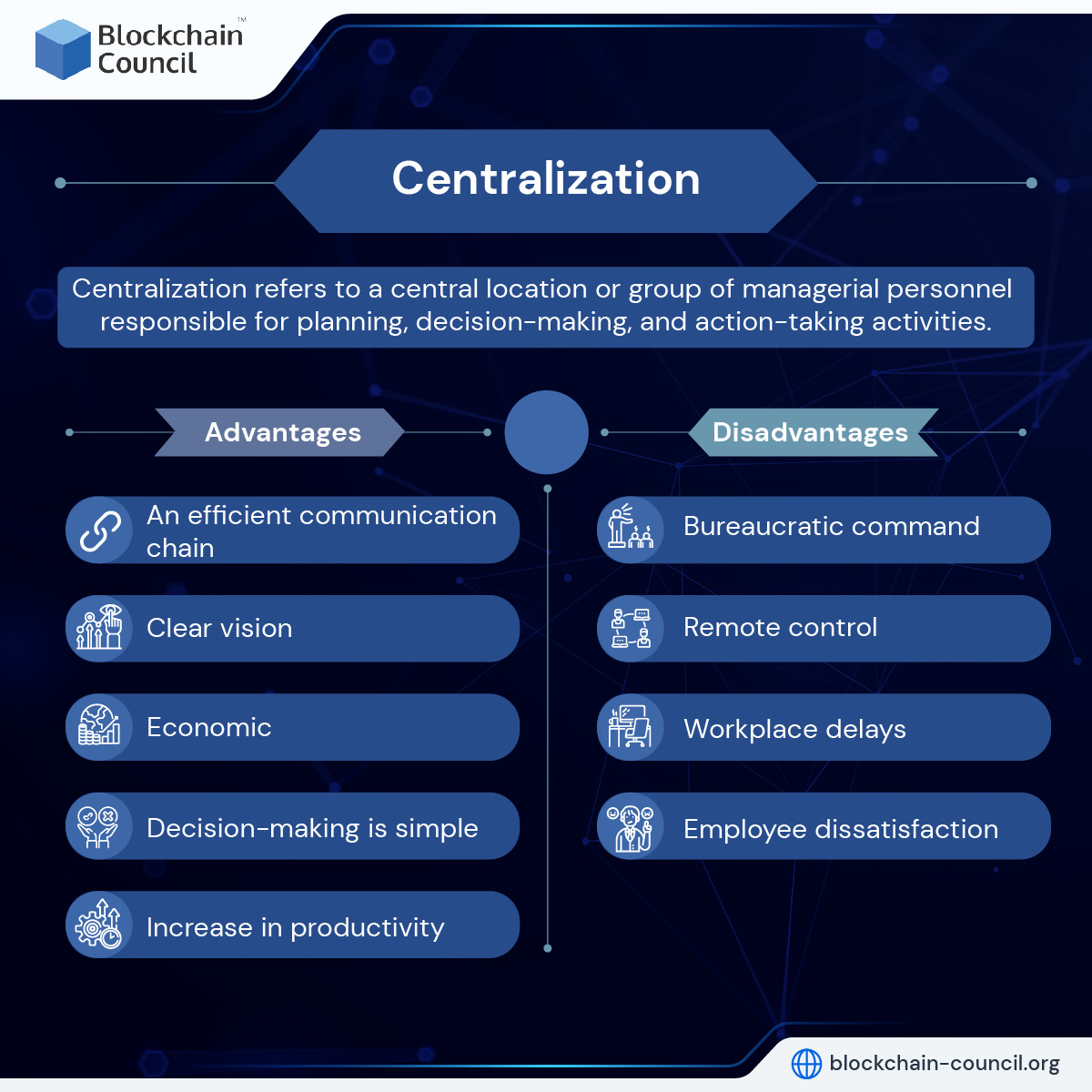
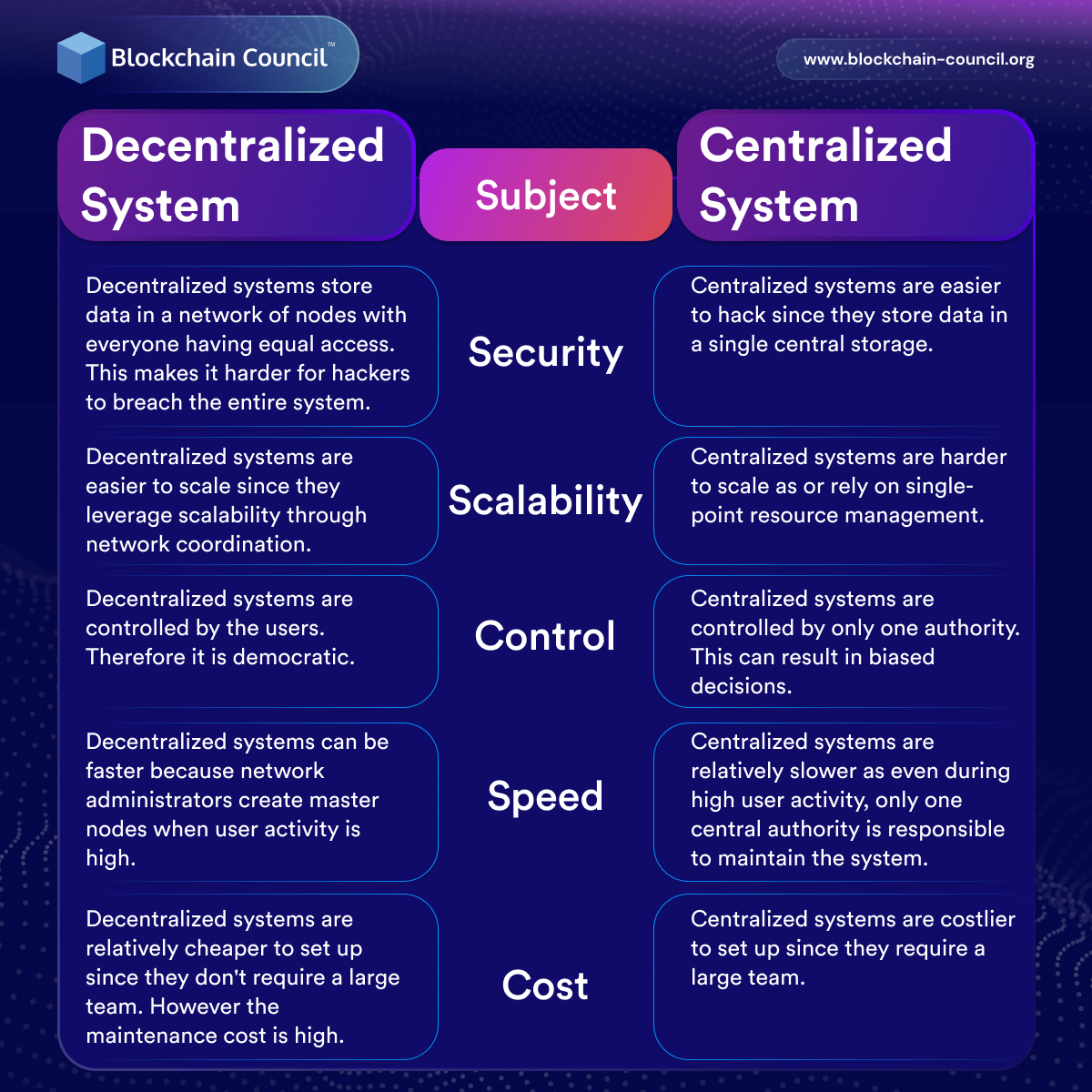



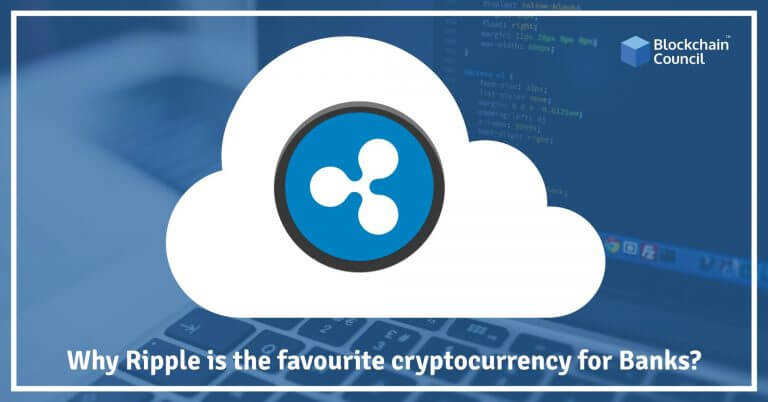
 Guides
Guides News
News Blockchain
Blockchain Cryptocurrency
& Digital Assets
Cryptocurrency
& Digital Assets Web3
Web3 Metaverse & NFTs
Metaverse & NFTs